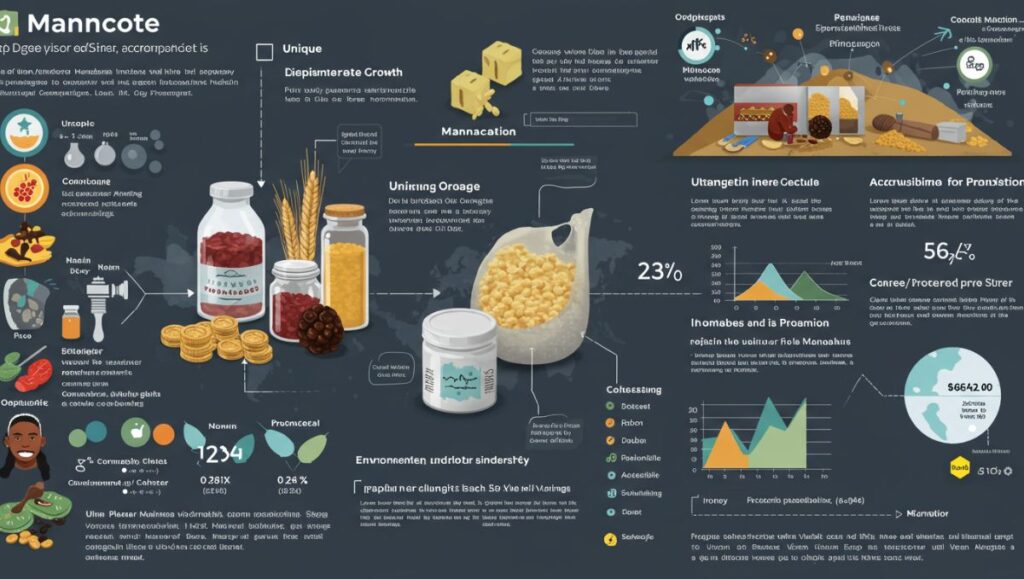What Is Mannacote?
Mannacote is a specialized coating agent widely used in the agricultural and industrial sectors. It is primarily known for its ability to encapsulate nutrients, agrochemicals, or fertilizers to control their release and increase efficiency. Mannacote functions as a protective barrier that enhances the stability and longevity of the active ingredients it encases.
In agricultural contexts, Mannacote is commonly applied to fertilizers and seeds to minimize nutrient loss, improve soil interaction, and promote sustained crop growth. Its usage is particularly valued in regions where environmental conditions or soil type make nutrient delivery challenging.
Composition and Formulation of Mannacote
Mannacote is formulated using biodegradable polymers and natural binding agents. These materials are designed to:
-
Resist moisture until activated by specific environmental triggers
-
Release nutrients or chemicals in a controlled manner
-
Adhere effectively to various substrates (such as seeds, granules, or tablets)
The coating’s thickness, porosity, and solubility can be tailored depending on its end-use. This flexibility makes Mannacote suitable for a wide variety of applications beyond just agriculture.
Agricultural Applications of Mannacote
1. Controlled-Release Fertilizers
One of the most common uses of Mannacote is in controlled-release fertilizers (CRFs). These are fertilizers coated with Mannacote that release nutrients over a longer period, aligning with plant nutrient uptake cycles. This reduces the frequency of applications, minimizes runoff, and improves crop yield.
2. Seed Coating
Mannacote is also used to coat seeds to:
-
Improve germination rates
-
Protect against pests and pathogens
-
Deliver micronutrients directly to seedlings
The coating acts as a physical barrier but can also be infused with growth enhancers, biostimulants, or microbial inoculants to further support plant development.
3. Soil Conditioners
In dry or nutrient-deficient soils, Mannacote-coated granules can slowly release beneficial agents, including water-retention compounds or trace minerals, helping restore soil balance over time.
Industrial and Non-Agricultural Uses
Although most widely used in agriculture, Mannacote is gaining traction in industrial and manufacturing applications. These include:
-
Encapsulation of chemicals for use in slow-release cleaning products
-
Protective coatings in the pharmaceutical industry to delay the release of active ingredients
-
Additive delivery systems in manufacturing, such as lubricants or anti-corrosive agents
The material’s biodegradable nature and customization capabilities make it ideal for industries prioritizing sustainability and precision delivery.
Environmental Impact and Sustainability
Mannacote stands out for being environmentally friendly, especially when compared to traditional plastic or synthetic coatings. Most formulations are:
-
Biodegradable
-
Non-toxic
-
Low in environmental residue
This ensures that the coatings break down naturally over time, leaving no harmful buildup in the soil or water systems. As environmental regulations tighten, especially in agriculture, Mannacote offers a compliant solution for sustainable farming.
Key Benefits of Using Mannacote
Let’s break down the primary advantages of Mannacote in practical use:
1. Efficient Nutrient Management
By controlling the release of nutrients or chemicals, Mannacote reduces waste and ensures better absorption by plants or materials.
2. Cost Savings
Though the initial cost of coated products might be higher, long-term savings are significant due to fewer applications, reduced runoff, and increased crop yield.
3. Improved Crop Health
The slow release of nutrients results in consistent plant nutrition, leading to healthier crops and more predictable growth cycles.
4. Environmental Protection
Mannacote reduces the likelihood of nutrient leaching, which can contaminate nearby water sources. It also helps maintain soil integrity over time.
Limitations and Challenges
No product is without drawbacks, and Mannacote is no exception. Some of the current limitations include:
-
Higher upfront cost than non-coated alternatives
-
Limited availability in some regions, especially in developing agricultural markets
-
Specific storage requirements, as humidity or high temperatures, may compromise coating integrity
Moreover, farmers unfamiliar with controlled-release technology may face a learning curve in adjusting application strategies.
Market Trends and Growth Potential
The global demand for coated fertilizers and delivery systems is on the rise. With an increased focus on sustainable agriculture and precision farming, the market for products like Mannacote is expected to grow steadily over the next decade.
Market Drivers:
-
Growing global food demand
-
Need to reduce the environmental impact of farming
-
Government subsidies promoting efficient fertilizer use
-
Expansion of organic and regenerative agriculture
Geographic Trends:
-
Asia-Pacific and Latin America are emerging markets due to expanding agricultural output
-
Europe focuses on eco-friendly solutions and stringent environmental laws
-
North America leads in technological innovation and adoption
These trends indicate a strong future for Mannacote and similar products in global supply chains.
How to Apply Mannacote Products
Application methods will vary based on the formulation and purpose. Here are general guidelines:
For Fertilizers:
-
Apply directly to the soil at planting time
-
Use standard broadcasting or banding equipment
-
Avoid mixing with uncoated products to ensure consistency
For Seeds:
-
Ensure proper drying before planting
-
Use precision planters where possible
-
Monitor for any coating wear during transport
Proper handling and storage are essential to preserve the coating’s integrity and function.
Research and Innovation in Mannacote Technology
Ongoing research in biopolymer science, nanotechnology, and agrochemical delivery is pushing Mannacote technology forward. Some notable innovations include:
-
Nanoparticle-infused coatings for enhanced nutrient uptake
-
pH-sensitive release triggers for region-specific soil adaptation
-
Dual-layer coatings that separate nutrients for phased release
These advancements promise even more efficient and targeted solutions soon.
Future Outlook
As agriculture faces the dual challenge of increasing productivity while protecting the planet, Mannacote and similar technologies are poised to play a critical role. The ability to customize coatings, reduce waste, and support plant health aligns well with the goals of modern, climate-smart farming.
With investments in R&D and increasing adoption, Mannacote is expected to become a staple in sustainable agriculture and beyond.
Final Thoughts
Mannacote represents a powerful step forward in the controlled delivery of nutrients, chemicals, and other agents across agriculture and industry. Its eco-friendly profile, combined with performance benefits, makes it a valuable tool for farmers, manufacturers, and researchers alike.







